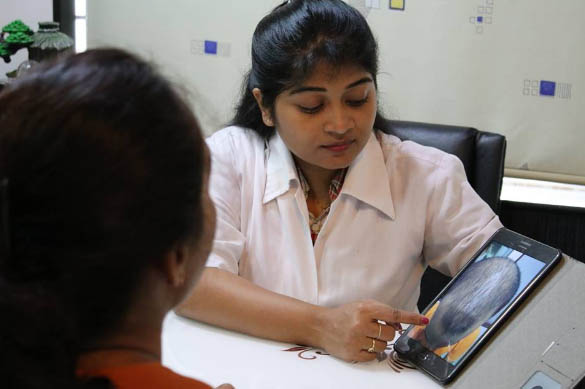Definition
Lumpectomy is the removal of part of the breast.
Lumpectomy may be combined with a procedure to sample lymph nodes in the area (axillary dissection or sentinel node biopsy).
Reasons for Procedure
This procedure is done to treat breast cancer.
Possible Complications
Complications are rare, but no procedure is completely free of risk. If you are planning to have a lumpectomy, your doctor will review a list of possible complications, which may include:
- Accumulation of blood in the wound
- Accumulation of clear fluid in the wound
- Infection
- Numbness of the nipple or underarm skin
- Change in the size and/or shape of the breast
- Blood clots
- Reaction to anesthesia
Some factors that may increase the risk of complications include:
- Obesity
- Poor nutrition
- Smoking
- Recent or long-term illness
- Use of certain medicines
- Characteristics of the tumor to be removed
What to Expect
Prior to Procedure
Your doctor will likely do the following:
- Physical exam
- Mammogram —this test uses radiation to take a picture of the breasts.
- Fine needle biopsy of the breast
- Blood and urine tests
- Wire-localization procedure—if the tumor was visible on mammogram, but is not able to be felt, the doctor will use a wire to mark the tumor.
Talk to your doctor about your medicines. You may be asked to stop taking some medicines up to one week before the procedure, like:
- Aspirin or other anti-inflammatory drugs
- Blood thinners, such as clopidogrel (Plavix) or warfarin (Coumadin)
Do not eat or drink anything for 8-12 hours before surgery, unless your doctor tells you otherwise.
Anesthesia
General anesthesia is most often used. You will be asleep.
Description of Procedure
A small cut will be made in the breast. The tumor will be cut out, along with some of the surrounding tissue. Another incision near the armpit may be made so that lymph nodes can be removed. The nipple and areola will not be removed. Plastic tubes for drainage may be inserted. The incisions will be closed with stitches.
Immediately After Procedure
Removed tissue will be examined. The findings may determine if any further surgery is needed.
How Long Will It Take?
About 1-3 hours
Will It Hurt?
Anesthesia prevents pain during the procedure. There is usually relatively little pain after a lumpectomy. There may be temporary unpleasant sensations, including numbness and a pinching or pulling feeling in the underarm area. Patients who have lymph node biopsies generally have more discomfort. If needed, you may be prescribed pain medicine.
Postoperative Care
- Keep the surgical area clean and dry.
- Ask your doctor about when it is safe to shower, bathe, or soak in water.
- You may have one or more tubes to drain blood and fluids while you heal. Empty the drains, measure the fluid, and report any problems.
- If tubes were placed, they will be removed in the doctor’s office 1-2 days later.
- Avoid vigorous activity for about four weeks, or as directed by your doctor.
- Try not to lift anything heavier than five pounds for about a week or longer if directed by your doctor.
- Wear a well-fitting, very supportive bra 24 hours a day for the first week.
If you do develop complications from lymph node surgery, you will need to take some special precautions:
- Do not have blood pressure taken, blood drawn, or shots given in that arm.
- Wear gloves to do dishes, household scrubbing, and yard work.
- Do not wear anything tight on that arm, including elastic in sleeves.
- Do not carry heavy packages, purses, suitcases, grocery bags, etc. with that arm.
- Keep the skin of that arm well-moisturized with a lanolin-containing product.
- Use an electric shaver if you wish to shave your armpits.
- If you had lymph nodes in your armpit removed during breast cancer surgery, participating in a physical therapy program may help to prevent lymphedema.
The breast may change in size or shape after lumpectomy. There may be local skin discoloration from dye used to localize lymph nodes for biopsy. The dye may also discolor your urine for a short time after surgery. You will be asked to see your doctor for a follow-up appointment within 7-14 days after the surgery.
The surgery is usually followed by an appropriate course of radiation therapy and, in some cases, chemotherapy.
Call Your Doctor
After arriving home, contact your doctor if any of the following occurs:
- Signs of infection, including fever and chills
- Redness, swelling, increasing pain, excessive bleeding, or discharge from the incision site
- If you have drains, report any problems that your doctor has discussed with you
- Oozing or discharge from nipples on either breast
- A lump, redness, or swelling in either breast
- If lymph nodes were removed: redness, warmth, swelling, stiffness, or hardness in the arm or hand
- Nausea and/or vomiting that you cannot control with the medicines you were given after surgery or that persist for more than two days after discharge from the hospital
- Pain that you cannot control with the medicines you have been given
- Cough, shortness of breath, or chest pain
- Depression
- New, unexplained symptoms
If you think you have an emergency, call for medical help right away.



























